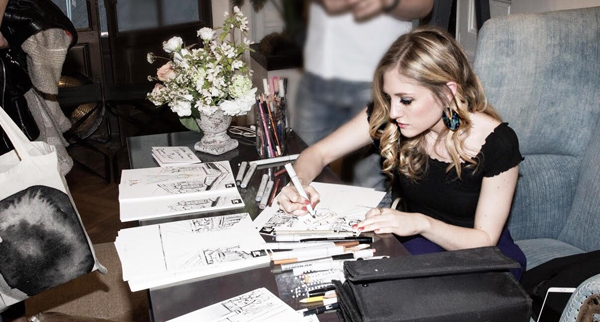This is a fun one! Eyes are by far my favorite things to draw. In each of my sketches I start with the eyes even if it is a full body sketch. This “HOW TO” is going to be a fairly quick way to draw them. Depending on how much detail you would like in the sketch it could take 5 minutes or 5 hours. For this one we are going the minutes route.
STEP BY STEP
First find a great photo reference. It could be from a magazine, Pinterest or even looking at the mirror would work just fine.
I usually start with a pencil outline. Doesn’t even have to be a fancy pencil - I seriously love just a regular mechanical one. For this particular sketch I actually went straight in with ink tho. It is kind of a freeing to start with ink since there is no going back. I do try and start with lighter shades tho in case I don’t like the proportion I can layer darker colors on top and it will disappear.
Ok, after you have the eye shape down I like to go in with microns. You can also use an extra fine point sharpie for this too. If want to go the micron route you can buy them at Blick.
Next I go in with more copic markers. I like the soft brush side on these. It gives sort of like a watercolor effect. I add eye color and more shades of skin tone under the eye and on top of the eyelids.
I always like to add a light shade of pink in the inner corner of eyes. This somehow gives the sketch a more lively appearance. It’s also included in the skin tone set of copic markers I linked in step 4.
I love white charcoal better than white colored pencils when adding highlights to my sketches. It pops a bit more in my opinion. I add white accents to inner eyes (just a few small specks) you DO NOT need to make each eye look identical. This is a habit some people fall into. Each eye is not exactly the same on a person so the imperfections sometimes make it even more realistic! More white can go in the middle of the eyelid. I just blend it with my finger.
Next, I love to add light grey shading right below the top lash line and the bottom lash line.
For the brows on this piece I did watercolor but usually just do small lines upwards using my .005 black micron. You can find these at Blick Art Supplies and a bunch of other spots.
If you have tried this and have had success please tag me @deanna_first on IG I would LOVE to see! Hope this helped. If have any questions comment below. :)





